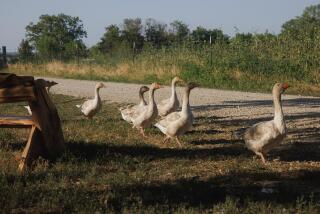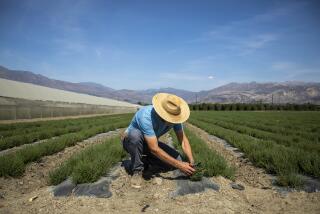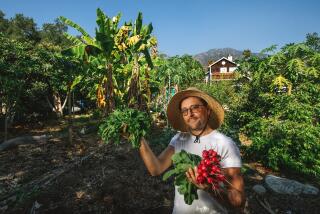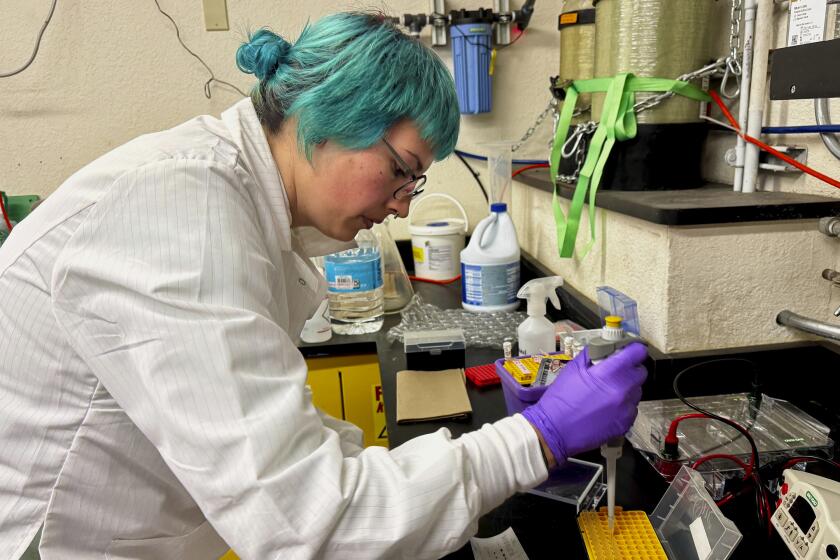Study Backs Unusual Farming Method
- Share via
Environmentally friendly agriculture--in particular, a ritualized version of organic farming invented 70 years ago by an Austrian homeopath--could mitigate the damage of chemical-dependent conventional agriculture without cutting into farm profitability, a study has found.
Washington State University soils scientist John Reaganold writes in today’s edition of the journal Science that his study of 16 New Zealand farms shows that organic-style biodynamic farming improves soil quality and cuts pollution.
And, he wrote, it can be economically competitive with current crop production, at least in New Zealand, where the government has stopped subsidizing farmers. Reaganold said subsidies in the United States and Europe skew agricultural economics in favor of conventional farming.
Such alternative farming methods, which are unusual in New Zealand and virtually unknown in this country, could be of particular interest in California and other areas where conventional farming has been blamed for ground water pollution, soil erosion and other problems, he said.
“The biodynamic farms proved in most enterprises to have soils of higher biological and physical quality,” he concluded. “On a (per-acre) basis, the biodynamic farms were just as often financially viable as their neighboring conventional farms.”
In his research, Reaganold compared pairs of adjacent conventional and biodynamic farms so that each would have nearly identical rainfall, topography and geologic histories. He also had access to each farm’s financial records.
Reaganold said he performed his research in New Zealand because--unlike the United States--it has a significant number of biodynamic farms next to conventional farms.
Biodynamic farming is similar to organic farming in that it shuns the use of synthetic chemical fertilizers and pesticides but requires the use of eight unusual compost additives.
The additives, first described by homeopath Rudolph Steiner in 1924, include yarrow flowers fermented several months in a stag’s bladder, oak tree bark composted in a fresh animal skull, the juice of valerian flowers and stinging nettles.
In addition, cow dung stuffed in a cow’s horn and buried for a winter is diluted in water and sprayed on the soil. Reaganold noted that the great dilution of this microbe-rich humus is not unlike homeopathy, a system of medical treatment that relies on extremely diluted pathogens to treat illnesses.
Reaganold said his research was not intended to determine the efficacy of these treatments, but he did note that topsoil on biodynamic farms was richer in organic material and microbes, and generally was more fertile, better aerated and permitted better drainage.
These characteristics could simply have been because of crop rotation or other practices common to organic-style farming, he said. However, Reaganold said that even untilled pasture on biodynamic farms had very good soil, indicating that the special treatments could have a measurable, if poorly understood, benefit.
“The study certainly warrants a closer look at biodynamic farming,” Reaganold said.






